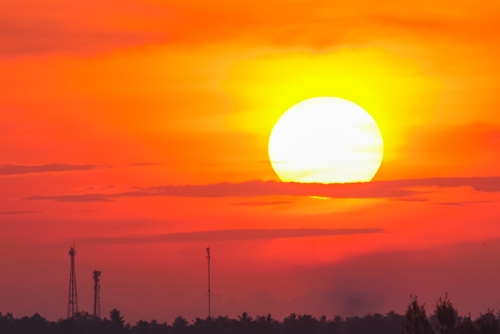Sunburns are an all-too-common side effect of summer, and they can spell bad news for you and your performance horse. What seems like a mild inconvenience can end up costing you a competition if you don’t address it quickly. Below are the answers to five common questions about horse sunburns:
1. Where do horses get sunburned?
Equine sunburns most commonly occur on areas of the body that are completely exposed. The skin on the nose and eyes are prime targets, as well as other protruding areas of the head. The back of the legs are also easily burned
2. Are horses naturally prone to sunburn?
“Horses can’t be ridden until the burn heals.”
Horses with white or pink skin are at higher risk of sunburn than those in darker shades. Also, animals with thin coats are more likely to get burned on their backs. They can’t be ridden until the burn heals, which can take months. This will set you back during training and may force you to pull out of a competition or two, so it’s best to prevent sunburn from the outset.
In addition, certain plants and products increase your animal’s photosensitivity – its susceptibility to sunburn – regardless of its skin color. These include:
- St. John’s wort.
- Ragwort.
- Alsike clover.
- Buckweat.
- Ground elder.
- Perennial ryegrass.
- Sulfa antibiotics.
3. What are signs of sunburn?
According to TheHorse.com, equine sunburns usually start out as skin lesions around the nostrils and eyes. The skin turns bright pink or red and eventually grows scaly or starts peeling. Severe cases lead to blisters with clear discharge. Also, horses with sunburn will avoid being touched. Their skin is sensitive, and pressure isn’t comfortable.
In a conversation with Horse and Hound, Dr. Janet Littlewood, a veterinary dermatologist, explained how the signs of a burn get worse the more they appear. Initial burns are usually mild, but repeated burns cause significant damage to the skin, leading to a thick scaly surface and possible cancer cells.
“Ultraviolet light exposure also has adverse effects on skin immune mechanisms,” she told Horse and Hound. “Hence, horses with white legs tend to suffer more problems with infections, such as bacterial folliculitis and mud fever. These conditions tend to become worse and harder to manage with time.”
4. How do I prevent sunburn?
“Sunburn prevention for horses is the exact same as for humans.”
Thankfully, preventing sunburn on your horse requires the exact same steps as caring after yourself. Avoid sun exposure, especially during the brightest and hottest parts of the day. This works out well in the summer, as you’ll want to keep your animal inside to prevent overheating anyway.
When your horse is out to pasture, make sure there’s plenty of shade to hide from the sun’s damaging rays. If none is available, cover your animal with a lightweight rug. Make sure the cover isn’t too heavy; again, you don’t want the animal to overheat.
Also, slather your horse’s skin in sunscreen. Human products are fine, but if you’re concerned, you can usually get some from your local feed or tack supplier. Horse Family Magazine recommended using colored sunblock so you can easily see where you’ve already applied protection.
5. What if my horse is already burned?
Unfortunately, many owners do not take preventative measures until they notice a sunburn in progress. It’s too late by this time, but there are things you can do to assist the healing process. First, keep your horse away from sunlight until the burn fully heals. Use topical healing treatments like aloe creams, or consult your veterinarian for recommendations. You should also call a vet immediately if you notice blisters and discharge.
While your animal is healing, add horse healthcare products like Finish Line’s Feet First Coat 2nd to support healthy skin growth. Feet First also promotes a thick, full coat to protect against sun damage.









